Discover some bright ideas for easy salt reduction and how they can benefit your health.
Key takeaways:
- The heart is very sensitive to the negative effects of excessive dietary sodium.
- Lowering your sodium intake can be instrumental in preventing or managing high blood pressure and other chronic health problems.
- Even small changes in dietary staples, condiments, and seasonings can have positive, long-lasting effects.
A healthy heart is essential to full-body well-being. When you look after your heart, other organs like your brain, kidneys, and liver also benefit. It’s a wise way to live that most Americans, unfortunately, don’t embrace – the average American diet contains 3,400 mg of sodium per day, which is dangerously higher than the 1,500 mg recommended by the American Heart Association (AHA).
The power to improve your heart (and overall) health is rooted in the snacks and meals you choose to consume. What follows is some food and drink for thought, and always remember to consult a physician before making any dietary or lifestyle changes.
Understanding the benefits of low-sodium living
Excess dietary sodium is linked to high blood pressure which is linked to heart disease and stroke. Remove the sodium, and you lower the risk. In fact, the CDC notes that high blood pressure begins to decrease in a matter of weeks for most people who reduce their sodium intake.
Healthier blood pressure puts less strain on arteries and blood vessels, decreasing the risk of heart disease and stroke, which together kill more Americans every year than all types of cancer combined. It really is that simple.
Tasty tips for reducing salt intake
There are many practical steps you can take toward living a lower-sodium lifestyle. Contrary to popular belief, you don’t have to resign yourself to eating only certain types of food or bland, tasteless meals. In fact, your dietary possibilities can actually increase as you explore healthier options and discover a wide variety of new flavors.
Savor alternative seasonings
For example, salt as a food seasoning can be replaced with a vast array of different herbs and spices, several of which have health benefits beyond simply lowering your sodium intake:
- Garlic – While garlic is a vegetable, it’s one of the few that’s also used as a seasoning. In addition to flavoring your food, garlic can help reduce swelling, lower blood pressure, and cut down LDL (bad) cholesterol, all of which can significantly help the heart.
- Cayenne pepper – The capsaicin found in peppers has also been linked with lowering blood pressure. It’s also been shown to help boost metabolism and reduce feelings of hunger.
- Coriander – Something of a super-powered seasoning, coriander has been shown in studies to have anti-inflammatory and immune-boosting properties in addition to lowering blood pressure and bad cholesterol. A coriander-rich diet has been linked to lower instances of heart disease, while the spice’s diuretic effects help flush excess sodium and water out of the body.
And those are just three of the wide range of herbs and spices you can use instead of salt to season your food.
Read all about it
Closely inspecting food labels is another effective way to catch sodium before it hits your plate. Learning to understand the various sodium-related terms food manufacturers use – often to mask the true amount of salt in their products – empowers you to make healthier choices.
Do it yourself
Cooking at home is another empowering way to cut back on sodium because it lets you choose the ingredients. In this way, you can decide exactly how much salt is involved – something that’s rarely possible when dining out. Bring fresh or frozen vegetables, lean meats, fresh fruits, and unsalted nuts into your kitchen (like the ingredients encouraged in the DASH diet) to cook heart-healthy meals.
Those are some solid ways to cut back on your sodium intake – but there are plenty of liquid options, too.
Liquid salt substitutes and alternatives
Salt and vinegar are a popular meal pairing, but vinegar can steal the show on its own. Balsamic vinegar is linked to many positive effects on the heart, similar to those of a glass of wine or grape juice. According to research, balsamic vinegar can help improve blood flow, prevent blood cell aggregation, and reduce the kind of arterial and vascular inflammation that can cause heart issues. What’s more, balsamic vinegar can support weight loss and help avoid blood sugar spikes, making it diabetes-friendly. All this with only a tablespoon or two added to your meals throughout the week!
Are you a soda drinker? Some can contain more than 100 mg of sodium which can drive up your daily intake especially if you have more than one a day. Your heart will thank you if you switch to citrus juices, particularly a 50/50 blend of citrus juice and water. Orange juice is packed with vitamins and nutrients connected to better heart health,
Soy sauce is a popular high-sodium seasoning that’s also available in lower-sodium varieties. Better still, try the AHA’s recipe for a low-sodium soy sauce alternative, which is far healthier for the heart and may also help with high blood pressure prevention.
Of course, sometimes, you still want that salty flavor that you love. Luckily, there’s a way to get it while still cutting down on your sodium intake.
Discover MicroSalt® – salt with half the sodium
MicroSalt®’s unique microparticles offer all the flavor of real salt with only half the sodium and none of the problematic ingredients found in many commercial salt substitutes.
There are two delicious ways to add all-natural MicroSalt® to your diet. With our table salt shaker, available in 2 oz. and 6 oz. sizes, you can shame your way to a 50% reduction in dietary sodium without compromising on flavor. And when you’re in the mood for a (low-sodium) salty snack, try our four flavors of SaltMe®! Chips.
These options can help protect your heart – and your health – while avoiding the potentially hazardous drawbacks of other salt substitutes like monosodium glutamate (MSG) and potassium chloride. Call us at 1-877-825-0655 or connect via our message page to learn more about the MicroSalt® ingredient and our award-winning mission to revolutionize the world of low-sodium living.




